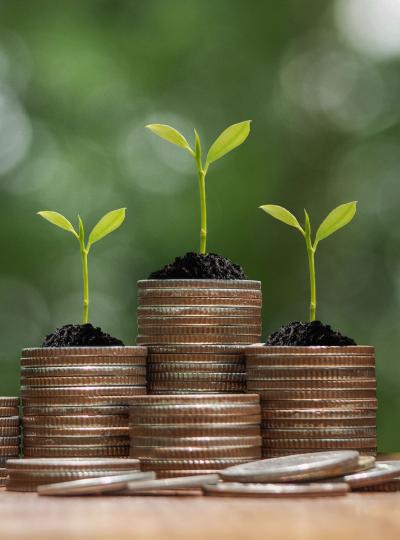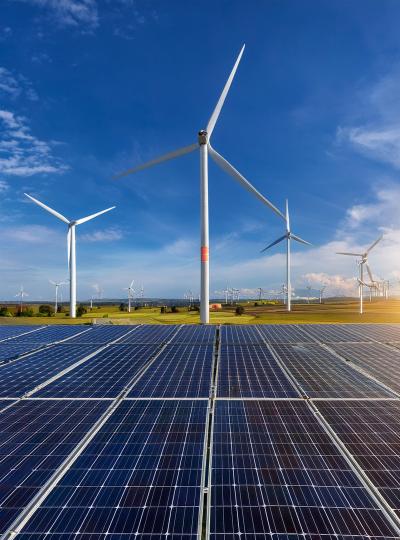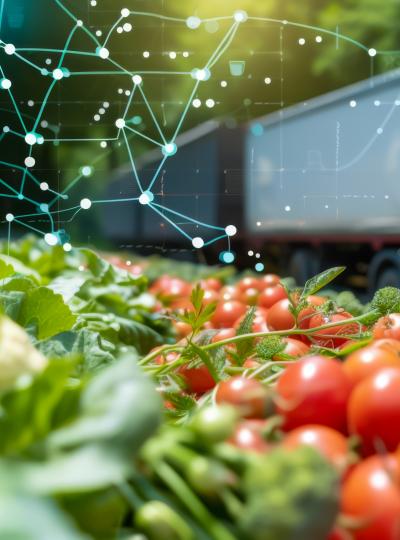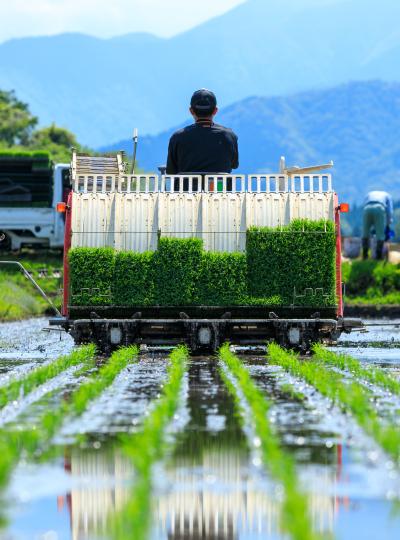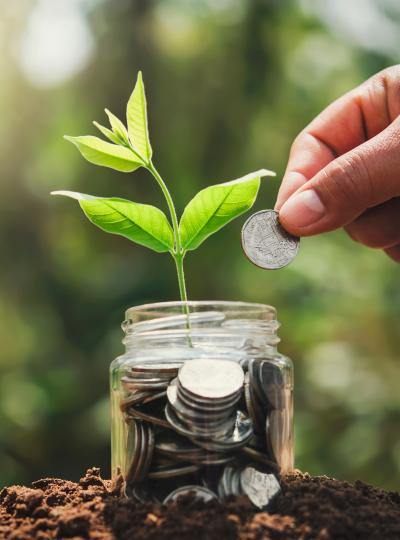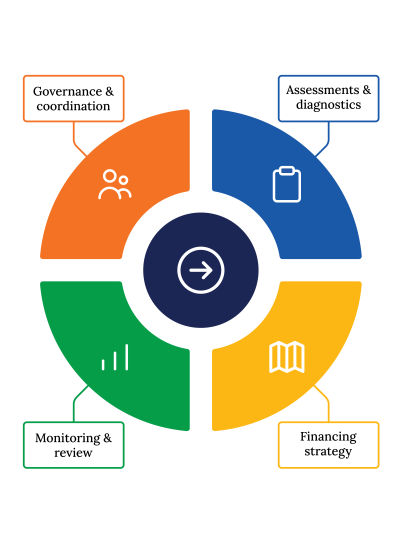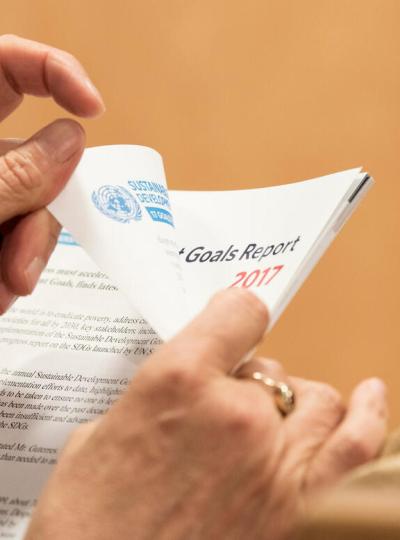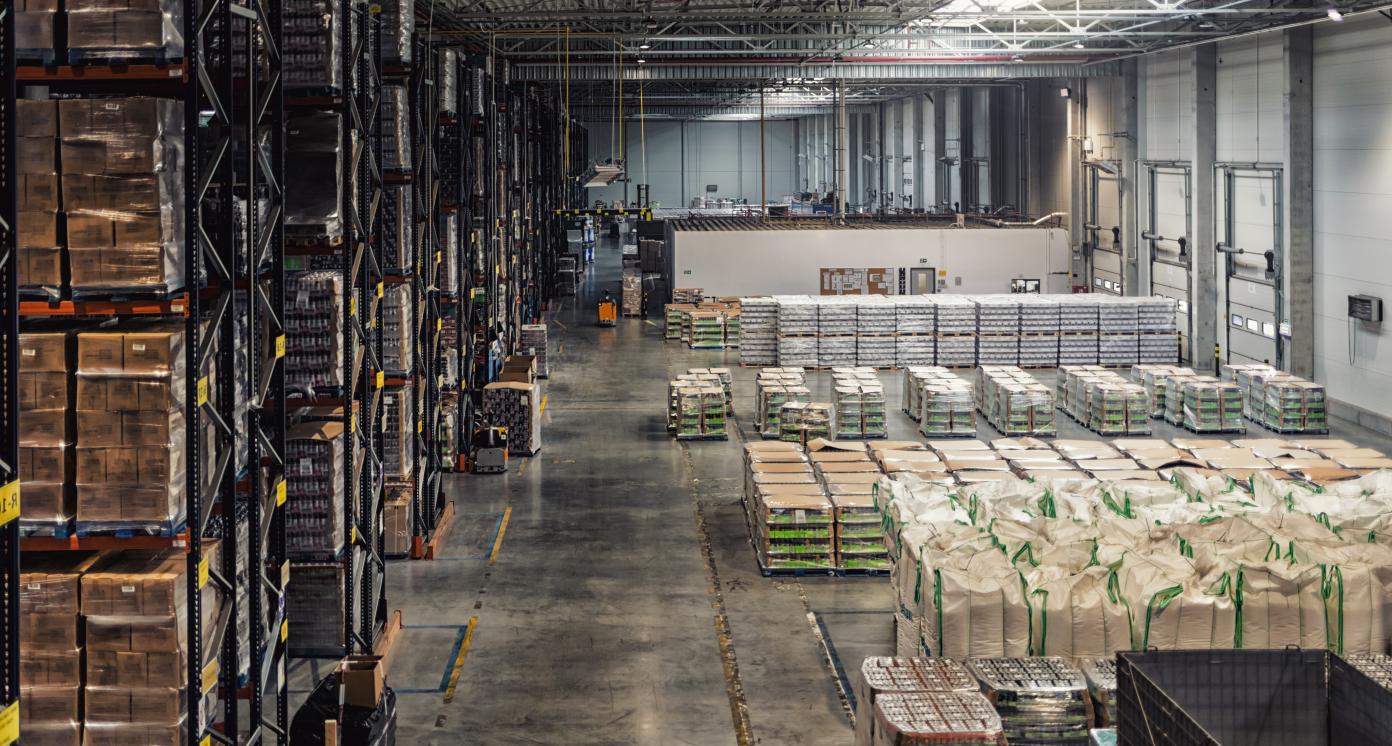Development of cold storage and logistics centres for fresh produce, dairy, and meat
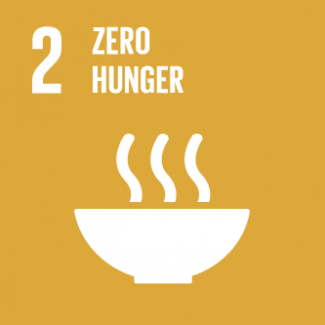
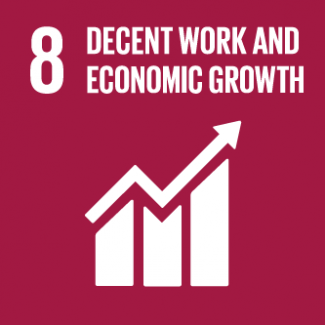
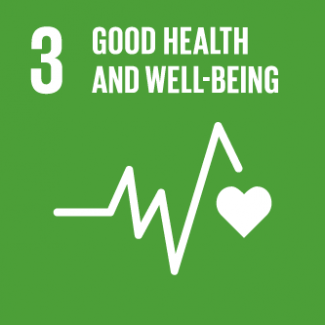
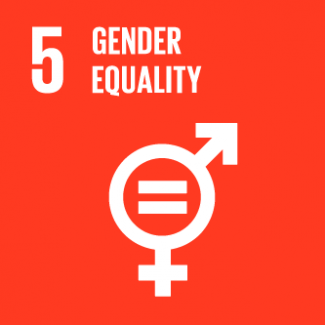
Business Model Description
Charge fees for cold storage and transport centres, offer subscription-based plans for regular users, and premium pricing for rapid or long-haul cold chain services. Partner with export companies and retailers to optimize logistics. Implement IoT-based tracking for quality assurance and efficiency.
Expected Impact
Cold storage infrastructure reduces food waste, improves incomes, creates jobs, and supports sustainable agriculture.
How is this information gathered?
Investment opportunities with potential to contribute to sustainable development are based on country-level SDG Investor Maps.
Disclaimer
UNDP, the Private Finance for the SDGs, and their affiliates (collectively “UNDP”) do not seek or solicit investment for programmes, projects, or opportunities described on this site (collectively “Programmes”) or any other Programmes, and nothing on this page should constitute a solicitation for investment. The actors listed on this site are not partners of UNDP, and their inclusion should not be construed as an endorsement or recommendation by UNDP for any relationship or investment.
The descriptions on this page are provided for informational purposes only. Only companies and enterprises that appear under the case study tab have been validated and vetted through UNDP programmes such as the Growth Stage Impact Ventures (GSIV), Business Call to Action (BCtA), or through other UN agencies. Even then, under no circumstances should their appearance on this website be construed as an endorsement for any relationship or investment. UNDP assumes no liability for investment losses directly or indirectly resulting from recommendations made, implied, or inferred by its research. Likewise, UNDP assumes no claim to investment gains directly or indirectly resulting from trading profits, investment management, or advisory fees obtained by following investment recommendations made, implied, or inferred by its research.
Investment involves risk, and all investments should be made with the supervision of a professional investment manager or advisor. The materials on the website are not an offer to sell or a solicitation of an offer to buy any investment, security, or commodity, nor shall any security be offered or sold to any person, in any jurisdiction in which such offer would be unlawful under the securities laws of such jurisdiction.
Country & Regions
- Republic of North Macedonia: Pelagonia
- Republic of North Macedonia: Skopje
- Republic of North Macedonia: Southwestern
- Republic of North Macedonia: Vardar
Sector Classification
Food and Beverage
Development need
The Republic of North Macedonia’s agri‑food sector suffers high post‑harvest losses, inadequate logistics infrastructure, and fragmented supply networks that undermine product quality and limit market access. Tackling these issues is essential to reducing food waste, stabilising supply chains, and enhancing agro‑export potential. (1)
Policy priority
The sector aligns with the National Development Strategy (NDS 2024-2044), supporting investments in agro-infrastructure and cold storage. The government offers subsidies, while EU IPARD funds back sustainable cold chain solutions. Strategic policies promote export capabilities and logistics digitization. (1 - 5)
Gender inequalities and marginalization issues
Women play a significant role in agriculture but face limited logistics support. This initiative enhances women's access to cold storage, financing, and training programs, promoting gender-inclusive value chains and economic empowerment. (7)
Investment opportunities introduction
Investments in regional agri-logistics infrastructure can improve supply chain efficiency, reduce losses, and enable market connectivity. Strategic upgrades may include sustainable storage facilities, digital management systems, and collaboration with private actors to strengthen delivery networks and support value-added agricultural exports. (3, 4)
Key bottlenecks introduction
Limited storage infrastructure; high initial investment costs; weak integration with transport networks; low digital adoption for inventory tracking; regulatory barriers in meeting EU export standards. (27)
Food and Agriculture
Development need
Strengthening agricultural value chain infrastructure improves food quality, reduces post-harvest losses, and stabilizes prices. Sustainable logistics and storage systems enhance export potential, support the green transition by reducing environmental impact, and boost food security, competitiveness, and resilience in the agri-food sector. (6)
Policy priority
Cold storage aligns with the National Development Strategy (NDS 2024-2044), EU IPARD funding, and government incentives for agro-logistics. Policies emphasize reducing post-harvest losses, improving food safety, and enhancing export competitiveness. (1)
Gender inequalities and marginalization issues
Women farmers and entrepreneurs lack access to cold storage facilities. Investments in the subsector will empower them by providing inclusive logistical support, training, and fair market access, contributing to gender equality in agricultural value chains. (7)
Investment opportunities introduction
Expansion of cold storage hubs in agricultural regions; renewable energy-powered facilities; digital logistics platforms; partnerships with retail and export companies; premium rapid transport solutions for perishable goods. (2)
Key bottlenecks
Cold storage and logistics face major constraints, including limited rural infrastructure, high upfront investment costs, and lack of temperature-controlled transport. Weak digital tracking systems hinder supply chain efficiency, while regulatory gaps in meeting EU food safety and traceability standards restrict export potential for agri-producers. (27, 28)
Agricultural Products
Pipeline Opportunity
Development of cold storage and logistics centres for fresh produce, dairy, and meat
Charge fees for cold storage and transport centres, offer subscription-based plans for regular users, and premium pricing for rapid or long-haul cold chain services. Partner with export companies and retailers to optimize logistics. Implement IoT-based tracking for quality assurance and efficiency.
Business Case
Market Size and Environment
USD 50 million - USD 100 million
10% - 15%
North Macedonia faces high post-harvest losses due to limited cold storage and logistics for fresh produce, dairy, and meat. Investing in cold chain infrastructure improves food quality, reduces waste, and boosts export potential, aligning with national agri-food and EU standards. (3, 19, 20, 35)
Indicative Return
10% - 15%
10% - 15%
> 25%
A 12% internal rate of return reflects the higher profitability of controlled atmosphere cold storage, which outperforms standard systems. Studies show IRRs of 12.36% vs. 6.63%, highlighting stronger economic performance. (13)
The 12–15% ROI per annum reflects increased efficiency, reduced food waste, and improved supply chain management. (14)
The 30–35% gross profit margin is driven by high storage demand, premium pricing for temperature-sensitive goods, and energy-efficient solutions. (15)
Investment Timeframe
Short Term (0–5 years)
Initial investment focuses on infrastructure setup, licensing, and early-stage operations. Public-private partnerships can accelerate deployment.(29)
Ticket Size
> USD 10 million
Market Risks & Scale Obstacles
Market - Highly Regulated
Impact Case
Sustainable Development Need
Reducing Food Waste & Improving Food Security - Cold storage reduces post-harvest losses by up to 40%, ensuring more food reaches consumers, improving food security, and supporting local economies. (16)
Lowering Carbon Emissions with Energy-Efficient Storage - Traditional cold storage is energy-intensive. Integrating solar-powered refrigeration can cut CO₂ emissions by 25%, aligning with EU Green Deal targets. (17)
Strengthening Rural Livelihoods & Economic Development - Farmers suffer income loss due to spoilage. Cold storage allows higher-value exports, stabilizing farmer incomes and creating new jobs in logistics and storage management. (16)
Gender & Marginalisation
Limited Access for Women in Agricultural Supply Chains. Women farmers face barriers in accessing cold storage facilities, reducing their ability to store and sell high-value crops. Investment in inclusive infrastructure can improve their market participation. (7)
Cold storage facilities create new job opportunities in logistics, storage management, and distribution. Targeted training programs can improve employment access for women and rural populations with limited access to formal labor markets.
Digital Divide & Market Access for Small Farmers - Many small-scale farmers, including ethnic minorities, lack digital access to manage inventory and logistics. Integrating affordable mobile-based tracking systems in cold storage hubs can bridge this gap. (18)
Expected Development Outcome
Reduction in food waste & increased food security minimizes post-harvest losses by 40%, ensuring a stable food supply. This enhances food security, especially in rural areas, while improving farmers’ incomes by reducing spoilage.
Sustainable Energy Use & Lower Emissions - By integrating solar-powered cold storage, CO₂ emissions can be cut by 25%, reducing the environmental footprint of agricultural logistics while lowering long-term energy costs.
Gender & Marginalisation
Improved Market Access for Women Farmers - By ensuring equal access to cold storage facilities, women farmers can reduce post-harvest losses, store high-value crops, and increase earnings. This promotes economic empowerment and gender inclusion.
Job Creation for Marginalized Groups - Cold storage hubs create new jobs in logistics, storage management, and transportation. Targeted skills training will help women, youth, and rural workers enter the agri-business workforce.
Primary SDGs addressed

2.4.1 Proportion of agricultural area under productive and sustainable agriculture
Agricultural land in North Macedonia is experiencing a declining trend. In 2022, the total arable area amounted to 515,000 hectares, of which 81% consisted of arable land and gardens. (19)

8.5.2 Unemployment rate, by sex, age and persons with disabilities
According to national statistics, North Macedonia’s unemployment rate stood at 14.4% in 2022, with youth unemployment reaching 29.2%.
Reducing rural unemployment is pivotal to achieving North Macedonia’s employment target of 60 % by 2044. Targeted investment in agro‑logistics and cold‑storage infrastructure could create over 5 000 jobs, thereby advancing inclusive and sustainable rural development.
Secondary SDGs addressed


Directly impacted stakeholders
People
Planet
Corporates
Public sector
Indirectly impacted stakeholders
People
Planet
Corporates
Public sector
Outcome Risks
Increased cold storage usage may lead to higher energy consumption, especially if powered by non-renewable sources, raising operational costs and emissions.
Larger agribusinesses may dominate cold storage facilities, making it harder for smallholder farmers to afford or access them, increasing inequality.
If cold storage infrastructure is male-dominated, women farmers and entrepreneurs may face limited control over pricing and logistics.
Traditional supply chains (local traders and informal markets) may be disrupted, leading to job losses in informal agricultural trade.
Impact Risks
Energy Sustainability Risk - If cold storage facilities remain dependent on fossil-fuel-based energy, sustainability goals will not be met, increasing CO₂ emissions instead of reducing them.
Gender Exclusion in Decision-Making - If women are not included in cold storage facility ownership and management, gender gaps in agricultural supply chains will persist.
Impact Classification
What
Reduced post-harvest losses by 40%, improving food security and increasing farmer incomes. (20)
Who
Smallholder farmers, women entrepreneurs, food exporters, and rural communities will benefit the most.
Risk
High energy costs, exclusion of small farmers, and gender disparity in facility ownership may hinder impact.
Contribution
Cold storage powered by solar energy can reduce CO₂ emissions by 25%, enhancing climate resilience. [17]
Impact Thesis
Cold storage infrastructure reduces food waste, improves incomes, creates jobs, and supports sustainable agriculture.
Enabling Environment
Policy Environment
Economic Reform Programme (ERP) 2023-2025. Includes structural reforms for modernizing post-harvest management, supporting agribusiness infrastructure, and strengthening export competitiveness. (3)
Smart Specialisation Strategy (S3) of North Macedonia (2023-2027) identifies Smart Agriculture and Food Processing as priority sectors for investment. (2)
Green Agenda for the Western Balkans (2020) supports low-carbon agriculture, including renewable energy-powered cold storage. (4)
National Strategy for Agriculture and Rural Development (2021-2027) provides policy direction for agribusiness investments, including storage & logistics. (20)
State Aid for Agribusiness (2023) provides grants & financial support for cold storage and agricultural infrastructure. (21)
Financial Environment
Financial incentives: World Bank Loan for Agricultural Facilities.A EUR 30.7 million loan is financing the establishment of post-harvest management centers and an Agro-Food Platform in Skopje. These centers will improve food safety, market access, and sustainability. (25)
EU IPARD Funding for Agricultural Supply Chain Projects.IPARD (Instrument for Pre-Accession Assistance for Rural Development) provides funds to modernize cold storage, food processing, and agricultural infrastructure. Focus is on ensuring food quality, hygiene, and sustainability. (26)
Tax Benefits for Agricultural Logistics & Infrastructure Investment. Investors in storage, sorting, and cold chain logistics benefit from tax reliefs and subsidies under the National Strategy for Agriculture and Rural Development. (20)
Regulatory Environment
Country's food safety framework aims to align with EU food standards, ensuring compliance with sanitary and phytosanitary measures. Regulations require agribusinesses, including cold storage facilities, to meet strict hygiene and quality control measures. (22)
Energy Efficiency and Environment Standards. New investments in agribusiness are subject to environmental impact assessments, particularly in energy consumption and emissions reduction. Cold storage facilities are encouraged to incorporate energy-efficient technologies and explore renewable energy. (23)
EU Integration and Market Regulations. The Republic of North Macedonia’s alignment with EU agricultural policies is evident in the introduction of the Common Market Organization (CMO) policy, which facilitates agricultural trade and ensures price stability. (24)
Marketplace Participants
Private Sector
Agricultural Producers & Exporters – Farmers, agribusinesses, and cooperatives that rely on cold storage to reduce post-harvest losses and improve product quality for exports.
Government
The government plays a crucial role in cold-storage investments through policy makers regulators who oversee agriculture, trade, subsidies, and food safety compliance.
Multilaterals
World Bank, EU, EIB, EBRD, IFAD, FAO, UNDP, UNIDO, GCF, and IFC through grants, loans, and technical assistance for sustainable agriculture, climate resilience, and market integration.
Non-Profit
Play a key role in cold storage access. Farmer associations & unions advocate for smallholder farmers’ market access. Sustainability NGOs promote green energy and eco-friendly cold storage. Food security agencies ensure rural communities benefit from improved supply chains.
Target Locations
Republic of North Macedonia: Pelagonia
Republic of North Macedonia: Skopje
Republic of North Macedonia: Southwestern
Republic of North Macedonia: Vardar
References
- (1. National Development Strategy of the Republic of North Macedonia 2024-2044 2. Smart Specialization Strategy 3. Economic Reform Programme (ERP) 2023-2025 - Ministry of Finance 4. Green Agenda, Regional Cooperation Council 5. Law of Agriculture and Rural Development
- (6) FAO (2022). The State of Food and Agriculture 2022 – Leveraging automation in agriculture for transforming agrifood systems.
- (7) FAO (2023). The Status of Women in Agrifood Systems Overwiew "27) UNEP and FAO. 2022. Sustainable Food Cold Chains: Opportunities, Challenges and the Way Forward. Nairobi, UNEP and Rome, FAO. https://doi.org/10.4060/cc0923en"
- (28) UN, IFC (2024), Cooler Finance, Mobilizing Investment for the Developing World's Sustainable Cooling Needs
- (8. Krstić, M., & Tadić, S. (2023). Hybrid Multi-Criteria Decision-Making Model for Optimal Selection of Cold Chain Logistics Service Providers. Journal of Organizations, Technology and Entrepreneurship, 1(2), 77-87. DOI: 10.56578/jote010201 9. Law of Organic Agriculture Production, 2016 10. Law on Quality of Agricultural Products 11. REGULATION ON THE PROCEDURE FOR GRANTING FINANCIAL SUPPORT FOR THE STORAGE OF AGRICULTURAL PRODUCTS - IPA "12. COMMON AGRICULTURAL POLICY FOR 2023-2027 28 CAP STRATEGIC PLANS AT A GLANCE" "13) Kart MCO and Demircan V. (2015). Analysis of investment cost of apple cold storage facilities. Custos e Agronegocio 11(1): 53–70"
- (14) Link: https://sfacindia.com/UploadFile/Statistics/Result-%20Study%20on%20Cold%20Storage.pdf
- (15) Demircan, V. and Koyuncu, M.A., 2017. Economic analysis of different cold storage types: a case study of Isparta province, Turkey. Scientific Papers Series Management, Economic Engineering in Agriculture & Rural Development, 17(2).
- (16) FAO (2019). The State of Food and Agriculture: Moving forward on food loss and waste reduction.
- (17) UNIDO (2021). Annual Report 2020
- (18) FAO and ITU. 2022. Status of digital agriculture in 47 sub-Saharan African countries. Rome.
- (19) Statistical Yearbook of the Republic of North Macedonia. Link: https://www.stat.gov.mk/publikacii/2023/SG2023-web.pdf
- (20)National Strategy on agriculture and rural development for the period 2021-2027. Republic of North Macedonia, Link: https://www.fao.org/faolex/results/details/en/c/LEX-FAOC209144/
- (21) 21) PROGRAM FOR FINANCIAL SUPPORT IN AGRICULTURE FOR 2023, Government of the Republic of North Macedonia, Official Gazette of the Republic of North Macedonia, No. 30 of 9.2.2023
- (22) Law on Food Safety, Official Gazette of the Republic of Macedonia No. 209/23
- (23) Decree on the Promulgation of the Law on Energy Efficiency. Link: https://www.economy.gov.mk/Upload/Documents/Zakon%20za%20energetska%20efikasnost.pdf
- (34) Civil Society Forum (2023). A COMMON FUTURE: ECONOMIC INTEGRATION OF THE WESTERN BALKANS IN THE EUROPEAN UNION
- (25) World Bank, Agriculture Modernization Project for North Macedonia
- (26) https://ipard.gov.mk/wp-content/uploads/2024/07/IPARD-PROGRAMME-2021_2027-II-modification-ENG.pdf
- (29) FAO (2016), Public-Private Partnerships for Agribusines Development "30) REGULATION (EC) No 178/2002 OF THE EUROPEAN PARLIAMENT AND OF THE COUNCIL. REGULATION (EC) No 178/2002 OF THE EUROPEAN PARLIAMENT AND OF THE COUNCIL of 28 January 2002. laying down the general principles and requirements of food law, establishing the European Food Safety Authority and laying down procedures in matters of food safety"
- (31) Program for the Development of the Pelagonian Planning Region 2021-2026, Center for the Development of the Pelagonian Planning Region
- (32) Program for the Development of the Skopje Planning Region 2021-2026, Center for the Development of the Skopje Planning Region
- (33) Program for the Development of the Southwest Planning Region 2021-2026, Center for the Development of the Southwest Planning Region
- (34) Program for the Development of the Vardar Planning Region 2021-2026, Center for the Development of the Vardar Planning Region
- (35) Cold Chain Market in Europe to grow by USD 76.8 Billion (2024-2028), driven by RFID adoption in logistics; report highlights AI-driven transformation - Technavio. Link: https://www.prnewswire.com/news-releases/cold-chain-market-in-europe-to-grow-by-usd-76-8-billion-2024-2028-driven-by-rfid-adoption-in-logistics-report-highlights-ai-driven-transformation---technavio-302349764.html

